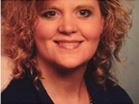One more reason! - next blood drive is May 2nd
submitted by Blood Drive coordinator Jon Sole
 In the summer of 2012, Gina Grein was constantly tired. She thought it was from working two jobs and needing extra rest. In November, Gina noticed a large bruise on her calf, but figured she had just run into something. Her sister had been diagnosed with Chronic Myelogenous Leukemia (CML), and Gina’s focus was on her sister’s health.
In the summer of 2012, Gina Grein was constantly tired. She thought it was from working two jobs and needing extra rest. In November, Gina noticed a large bruise on her calf, but figured she had just run into something. Her sister had been diagnosed with Chronic Myelogenous Leukemia (CML), and Gina’s focus was on her sister’s health.Her dentist even noticed that her gums had even changed color, but they felt that perhaps a change in toothpaste was to blame. It seemed to go away. Everything was explainable. I had never been sick in my life.
On New Year’s Eve, Gina went to the grocery store and barely made it home. She recalls sitting down on the couch and waking up six hours later.
Over the next few days, she could hardly eat or get out of bed. It’s the flu, she thought, but a weird flu. After a few days of calling in late or being sent home from work, she asked a friend to take her to the doctor.
Gina’s bloodwork showed a 50% blood loss, but she still thought she had caught a virus. The doctor said, ‘I don’t think you have the flu. Go to the ER.’ I was like, ‘how can I have a blood loss with the flu? She received four blood transfusions over the next four days. A bone marrow biopsy confirmed the worst: acute myeloid leukemia (AML). Gina was released from the hospital in Puyallup, and sent to Seattle Cancer Care Alliance (SCCA) the next day. The prognosis was not great: SCCA oncologists gave her 10 months to live with no treatment, and a 39% chance of survival with standard chemo. But there was another option: adding a trial drug called “the hedgehog” might up her odds of beating AML to 70%. She would be the first patient at UW on this regimen.
Gina was hospitalized at UW Medical Center a for seven days straight, with around-the-clock IV chemo. She received more than five months of treatment.
Thanks to the chemo and “the hedgehog,” her AML went into remission for a year but returned.
Doctors put her onto another trial drug. She didn’t feel sick as she had been before, but her blood counts were down to zero.
A stem cell transplant would be Gina’s only hope of a cure. She received blood transfusions every two to three days while doctors looked for a bone marrow match.Siblings have a 25% chance of matching a patient’s human leukocyte antigen (HLA), the marker that helps your immune system determine what belongs in your body and what’s an invader. Out of Gina’s five siblings, only two were eligible to be considered. One was a partial HLA match, and one was a zero HLA match. There were no qualified unrelated donors in the bone marrow database.
Then her UW physicians decided on a novel procedure: a double cord blood transplant. Gina would receive cord blood from two donors to increase her odds of success.
Cord blood units can successfully engraft with an HLA match that is less exact than the matches required for a bone marrow transplant from adult donors, resulting in lower probability of graft versus host disease.
On December 13, 2014 Gina checked into UW Medical Center for five rounds of chemo and one round of head-to-toe radiation to kill off her bone marrow and immune system, and the next day received two units of cord cells from two anonymous infant boys.
The transplant itself took 40 minutes, 20 minutes per unit. It’s no different from getting blood – the recovery part is the hard part. Gina now shares an immune system with baby boy #2, and likens recovery to stepping back to infancy: Every childhood shot is gone, so it’s hard for people to understand that I can’t be around sick people. Chicken pox, measles - I don’t have an immunity to those any more.
Twenty months later, she’s in remission with no evidence of disease. Rebuilding her immune system has been harder than she imagined, but her energy is coming back and she’s excited that she’s able to work a few hours a week at her local Home Depot.
Gina has nothing but gratitude. She feels fortunate to live in an area with outstanding medical facilities like UW Medicine and SCCA. She’s grateful to the local blood donors who sustained her during her treatment, and to the infant boys – now toddlers – who allowed her to live.
I think about those donors every day, and their parents. I wish you could write a note to the parents, but I just feel grateful that cord blood donation is now starting to have the awareness that it can to save somebody’s life, because without that I wouldn’t be here right now.
About Bloodworks Northwest
Puget Sound Blood Center is now Bloodworks Northwest! Saving lives through research, innovation, education and excellence in blood and laboratory services in partnership with our community.
At a glance
As a unique, hybrid provider of health care services for the community, we collect, test and distribute essential, lifesaving blood to nearly 90 hospitals in the Pacific Northwest
Our Mission
Saving lives through research, innovation, education and excellence in blood, medical and laboratory services in partnership with our community.